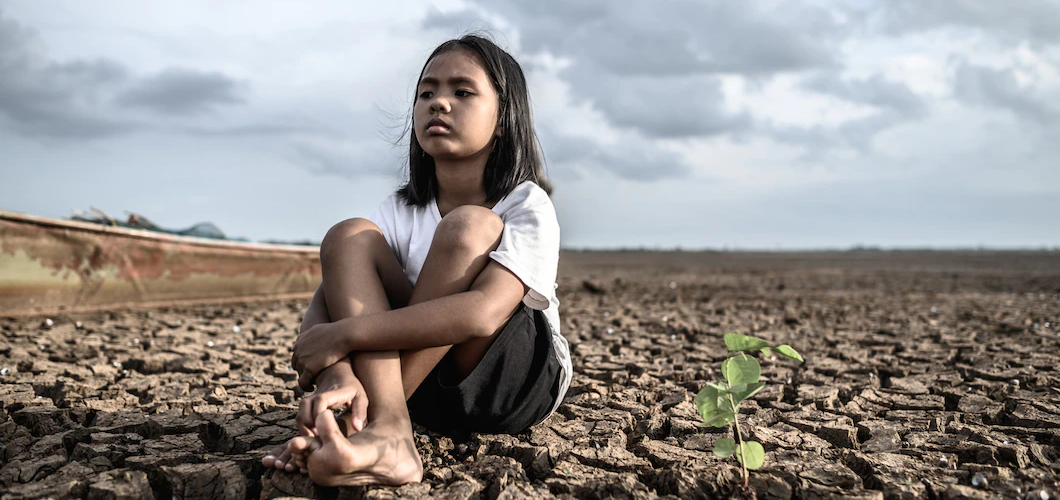
Understanding the decarbonization roadmap
Role of boards in developing a robust climate mitigation strategy
All businesses are exposed to the effects of
climate change.
Climate change impacts are nonlinear, and even at only 1.5°C of warming –
consistent with the goals of the Paris Agreement
– The physical risks to some natural, social and economic systems could be extreme. In fact, some of these effects are already being witnessed.
Humans have never experienced sustained global mean surface temperatures at or above 2.5°C higher than the 1850-1900 average, which last occurred
over 3 million years ago. Absent rapid emissions reductions, the world will likely meet or exceed that level of warming well before century’s end.1 As physical risks continue to increase, transition and liability risks for economies and companies also rise. Furthermore, companies are increasingly held responsible for emissions along their entire value chain. Whatever value chain your company is in, the end product will need to be carbon neutral and so your contribution to that outcome will come under the spotlight.
Ultimately, it is the responsibility of the board of directors to provide oversight of decarbonization to minimize the impact of the business on the climate and adapt the business to minimize the detrimental impacts of climate change upon operations.
Directors are responsible for considering foreseeable risks and opportunities, which requires assessment of the materiality of impact. As every value chain and company will be affected by climate change, so should every company have assessed their climate risk and opportunity and put in place a roadmap to decarbonization. An effective decarbonization plan can both mitigate the risk and capture the emerging opportunities. Market expectations, fiduciary duties and stewardship obligations require us all to act urgently.
Rising pressure on organizations to respond to, and mitigate, climate change impacts
Average global temperature over the past decade was approximately 1.07°C above pre-industrial levels (1850-1900).2 Global surface temperature will
continue to increase until at least the mid-century under all emissions scenarios considered by the Intergovernmental Panel on Climate Change (IPCC)
Warming is very likely to be 1.9°C this century, even in the low-emissions scenario, and 2.1°C to 3.5°C in the intermediate scenario. The IPCC’s recent report on impacts, adaptation and vulnerability confirms that humanity must seize a “brief and rapidly closing window of opportunity” to avoid severe damage to economies, health, food systems and many other aspects of society.
The report estimates that 3.3 – 3.6 billion people are currently highly vulnerable to climate change, and that this number will continue to grow as
temperatures rise.
The financial impacts are real – between 1970 and 2019 there have been 11,072 weather, climate and water natural disasters recorded globally. These have resulted in over 2 million deaths and USD $3.6 trillion in losses, USD $383 million per day on average between 2010 and 2019.4 The benefits of lower emissions can be realized within our lifetime if we act now
It is unequivocal that human influence has warmed the atmosphere, ocean and land, and businesses are starting to take action; 41% of companies in the World Economic Forum’s Community of Chairpersons have adopted science-based targets. For most, adopting such targets are not for altruistic or compliance reasons, but rather to ensure they are effectively managing their risks and looking to seize the emerging opportunities from disruption.
There is no free ride for a global economy that does not reduce emissions, and there is significant regional variation. According to modelling by the
Deloitte Economics Institute, the economic damage of an estimated 3°C of warming to the Asia-Pacific region, Europe and the United States could reduce gross domestic product (GDP) every year to 2070. This damage is in the order of $115 trillion lost in GDP over the next 50 years.
As impacts of climate change occur in a nonlinear way, the physical risks for some ecosystems and communities will be extreme, even at 1.5°C. If tipping points occur, this may have knockon effects across interconnected systems and businesses without warning;6 all value chains and all businesses are exposed.
Investor pressure is increasing. Courts are increasingly holding key decision-makers liable for their emissions (see case study 1). As of July 2021, there have been over 1,800 climate change cases filed globally. Accountability for emissions will increasingly include not only direct emissions,
but indirect emissions caused by upstream or downstream in the value chain. More companies face shareholder proposals at annual general meetings and pressure from ratings agencies, proxy firms and financiers to disclose and do more about climate issues.
Decarbonization
Successful organizations will need to both mitigate and adapt. However, some sectors and geographies are more vulnerable to the consequences of climate
change (e.g. agricultural production) while others contribute more to the causes of global warming (e.g. fossil fuel-based power generation). Depending on the organization’s geography and sector, one may require greater scope and focus than another.

An insurance company with a purpose to “facilitate risk taking for the greater good of society” found, after analysing its value chain, significant downstream impact on the climate via its insured customers. As a result, the company placed greater emphasis on mitigating the impact on the climate of its value chain through product innovation
– including through incentivizing customers to use electric vehicles over petrol/diesel vehicles
– implementing a “green endorsement” to cover additional costs of reinstatement with sustainable building materials, and encouraging repair over replace’ during its claims process.
Directors should regularly reassess priorities around mitigation and adaptation in line with a company’s purpose and the board’s stewardship obligations.
For nearly 100 years, Volvo had focused on building trucks with the best combustion engine in the world. In the last several years, however, given the
ongoing global electrification, the industry is shifting from primarily siloed mentalities with companyspecific solutions, to participating in ecosystems
with its competitors. This includes collaborating on new industry solutions such as fuel cell technology and electric charging. As a result, the company’s
culture is now more outward focused.
The shift in thinking is transformative. The Board spent 3-4 years in extensive conversations about its strategic options. The critical moment was when the board realized that electrification and the development of fossil-free transportation will happen, and happen fast, and that the company would be better off being at the forefront of this development and leading this critical change in the industry.
Being carbon neutral is good business. The industry will go that way and it is the right way. Our climate strategy is the agenda. There is no separate agenda. It is nothing but the agenda. Carl-Henric Svanberg, Chairman of the Board, Volvo Group, Sweden
Why reduce emissions?
According to the IPCC report, to have a medium chance of limiting warming to 1.5°C, the world can emit a further 500 gigatons of carbon dioxide equivalent (Gt CO2 -e) from 2020. To have a likely chance (67%), the remaining budget drops to 400 Gt CO2 -e. Based on current annual global emissions and taking into account current forecast growth and country-level abatement commitments, this carbon budget will be expended by 2030
The Deloitte Economics Institute estimates that by limiting warming to 1.5°C, the regional economies of the Asia-Pacific region, United States and Europe could together be $47 trillion larger by 2070 compared to a future of climate inaction that results in 3°C of warming.
Key lessons for chairpersons
1- Disruption from climate change and climate action is going to materially
disrupt every part of the economy. The rising opportunities and risks must be
captured in strategic thinking.
3- Apply the precautionary principle and take urgent transformative action as it is impossible to predict with accuracy when carbon emissions will
cause climate change to accelerate beyond the point of recovery.
2- As fiduciaries, directors should consider their obligation to promote
decarbonization and influence the adoption of sustainable practices along
the breadth of its value chain. This is both for the benefit of society and to
bring long-term financial sustainability to the companies they serve.
4-There are a range of market opportunities arising from early climate action including accessing growing markets and adopting more efficient technologies.
